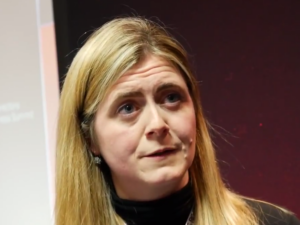How Penguin Random House turned its recruitment process over to social media
- 3 Min Read
Penguin Random House used a social media recruitment project costing just £1,000 to attract almost 800 applications.
- Author: Owain Thomas
- Date published: Feb 10, 2016
- Categories

Penguin Random House used a social media recruitment project costing just £1,000 to attract almost 800 applications.
The Scheme was part of a deliberate approach to bring new blood into the organisation outside its traditional recruiting population. Its success prompted Penguin Random House to remove all degree requirements from all its recruitment processes earlier this year.
Speaking at the HR Directors Business Summit, group HR director Neil Morrison explained: “We decided to focus on our social strategy. Why? Simply we needed to attract people who were different, people who would bring new ideas who would bring new ways of thinking to our organisation.
“We wanted to recruit for potential. We wanted to recruit people based on their ability, not necessarily on their academic background or their work history. We needed new voices and perspectives to tell people about our books and our stories. We wanted to breakdown perceived barriers about publishing,” he added.
The HR team took control of the near month long project which began with two days of build-up before officially launching.
Following an initial burst the number of new visitors fell away, but repeat visitors grew as the deadline neared, showing high engagement.
Analytics in action: How Linkedin accurately predicted future recruiting needs and saved millions
Regular posts on Facebook, Twitter and other channels directed potential applicants to the Tumblr page which hosted The Scheme. Question and answer sessions and blog posts drew greater interest and prompted lots of interactions.
“The entirety of the scheme was built and run by the HR team,” continued Morrison. “So everything from the coding, the branding, the design, the media strategy, and the copywriting was built by the HR team, and that came across in terms of the design.
“We wanted to design something that was very welcoming, that was very fresh, that was very light and maybe change some of the preconceptions of the people coming in.”
Widening the net
Overall, Morrison described it as a success but wants the 2016 version to go further and reach a wider audience. By the deadline 744 applications had been received; 43% from the specific target age of 18-24 and 81% within the wider target 18-34 age range.
Applicants had a high interest in books, but not overwhelmingly so or as high as other interest categories, and all four final hires admitted they would not have applied without this campaign.
“It cost us under £1,000 to produce the recruitment campaign, which was pretty impressive, but that is not including labour costs. It was seat of the pants – we learnt a lot as we went along and we responded as we went along. And it was incredibly resource hungry.
“We did well, but we didn’t do well enough,” he concluded.
The final statistics for The Scheme were:
- 23,363 views of the site
- 15,720 users of the site
- 5,829 twitter engagements
- 8,988 engaged facebook users
- 219 tumblr followers
- 327 storify Q&A views
- 1,115 twitter Q&A engagements
- 96 different referral sources








